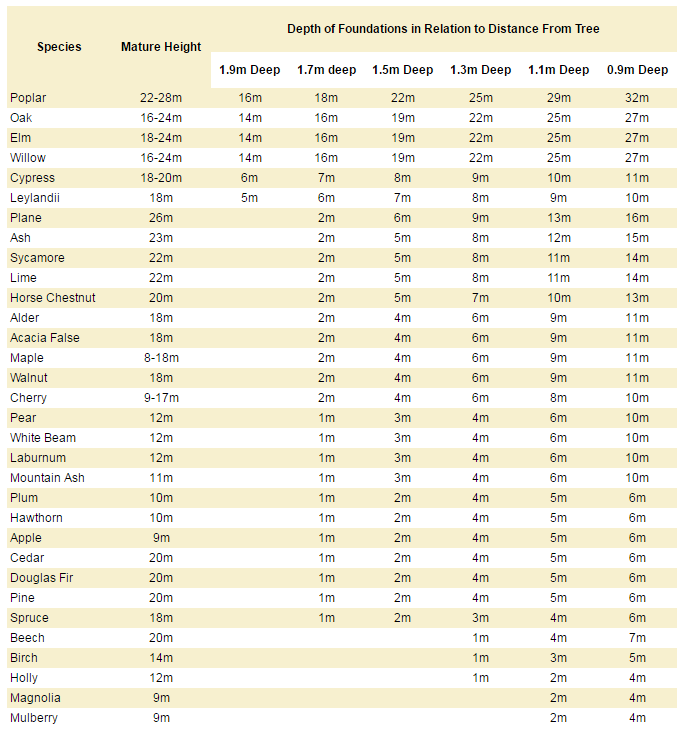Tree survey mortgage lenders
There is continuing demand from both mortgage lenders and insurance companies for Arboricultural reports that are required to assess the likelihood of tree related subsidence occurring in the future. Professional Arboriculturists assess these risks and provide the required reports. Mortgage lenders often require a survey of trees on and surrounding the purchaser's property before borrowing can be finalised. The mortgage report provides the lender and the house buyer with information on the age, size and condition of the tree, soil properties and future management plans if required. The report offers lenders and insurers an opportunity to effectively and quickly assess the potential for trees, their roots or vegetation to influence the building foundations.
Concerns regarding tree roots which may affect the foundations of a property occur especially when the underlying ground is clay. In order to assess the risks it is necessary to establish the tree species, its distance from the property, the depth of the foundations, and to recover soils samples for laboratory tests to determine the shrinkage potential of the clay. From these factors it is possible to assess the risks using tables from new house building standards. Mortgage lenders will require an indication as to the possibility of both direct and indirect damage occurring.
Direct damage is damage caused by the mechanical action of any part of a tree in direct contact with part of a structure. This contact may be constant such as a stem of a tree abutting a wall or variable, such as a branch hitting a structure as it moves in wind or as it falls. The latter is common and usually avoidable by light crown reduction. It rarely justifies removal of a tree. The former is rare simply because trees are seldom allowed to develop and mature when in contact with a structure (other than boundaries walls). Roots generally encountering a solid object will be diverted and follow the course of least resistance, thereby causing no damage. The continuous radial expansion of trunks and structural roots in contact with a structure and in a restricted space, however, can exert sufficient pressure to displace lightweight structures.
Indirect damage is caused by the influence off a tree on soil moisture levels of a sub soil which is prone to shrinkage and expansion. The ground under a shallow foundation can sometimes be de-hydrated through the transpiration of leaves abstracting moisture from the ground and less significantly by the interception off rainfall by the crown. As a result the ground contracts and the weight of a structure with reduced support can cause settlement to occur. Usually winter rainfall results in full recovery so that the process becomes seasonal. Conversely the removal of the offending tree results in long-term recovery and often significant expansion of the ground.
We can provide mortgage reports making an inspection of trees, advising of potential problems and recommending suitable action. If required, tree surgery can be arranged and supervised as part of a whole package. Concerns regarding the health and condition of trees generally arise because it could pose a danger to the property or to people from branches breaking off or even the whole tree being blown over by high winds.

Call us on
07950 259 905

